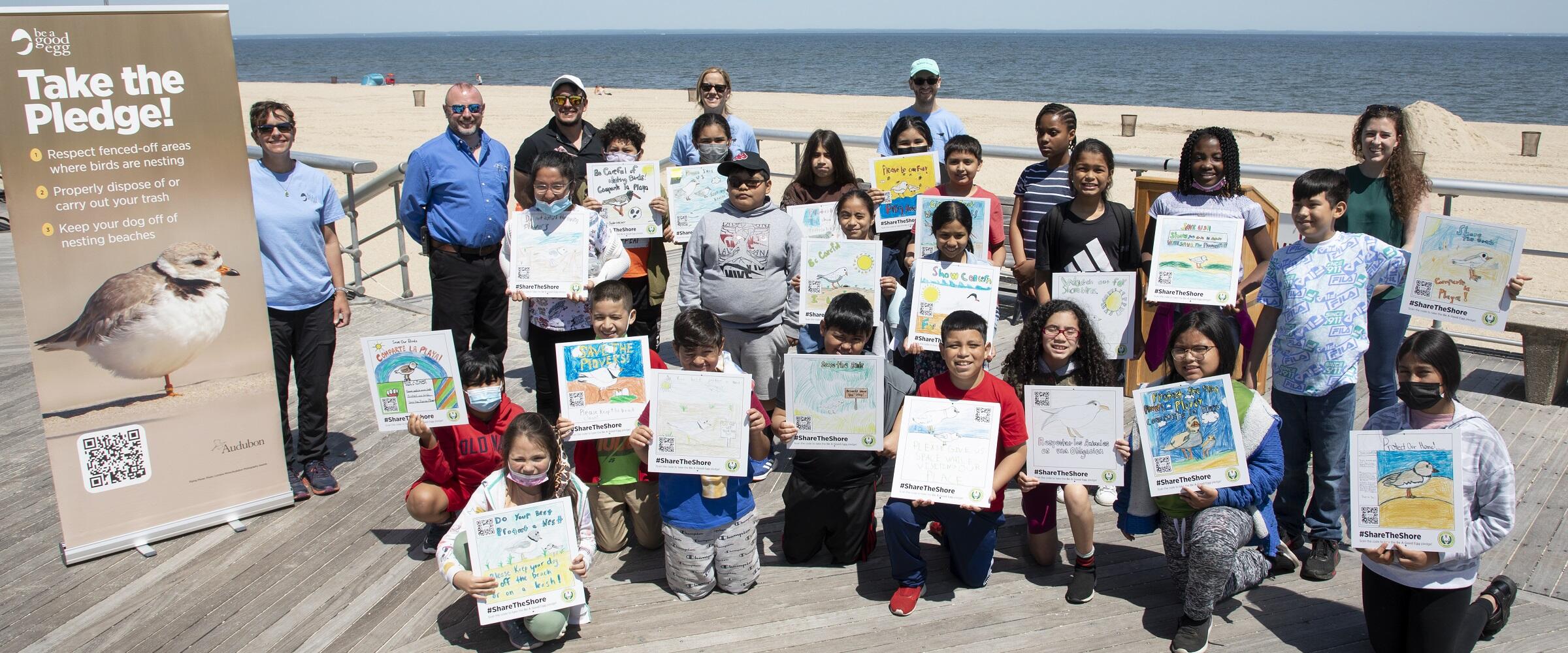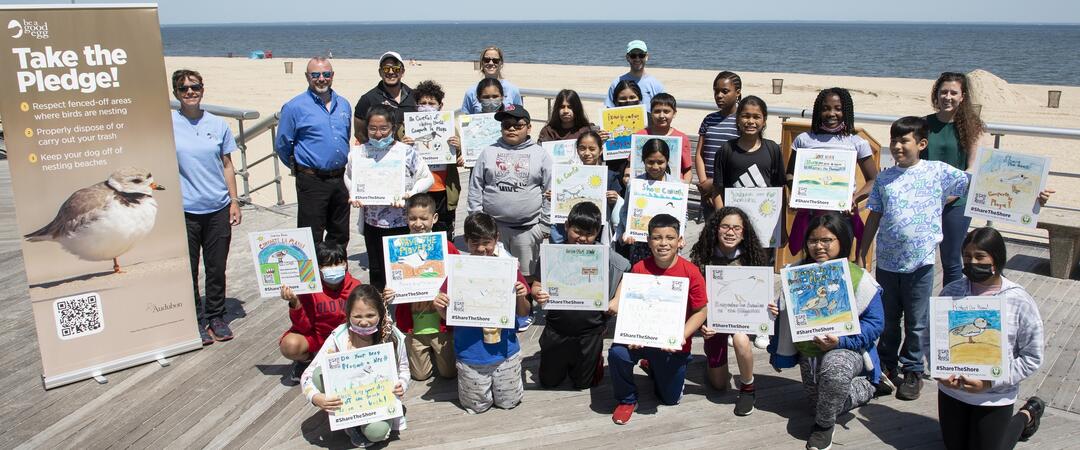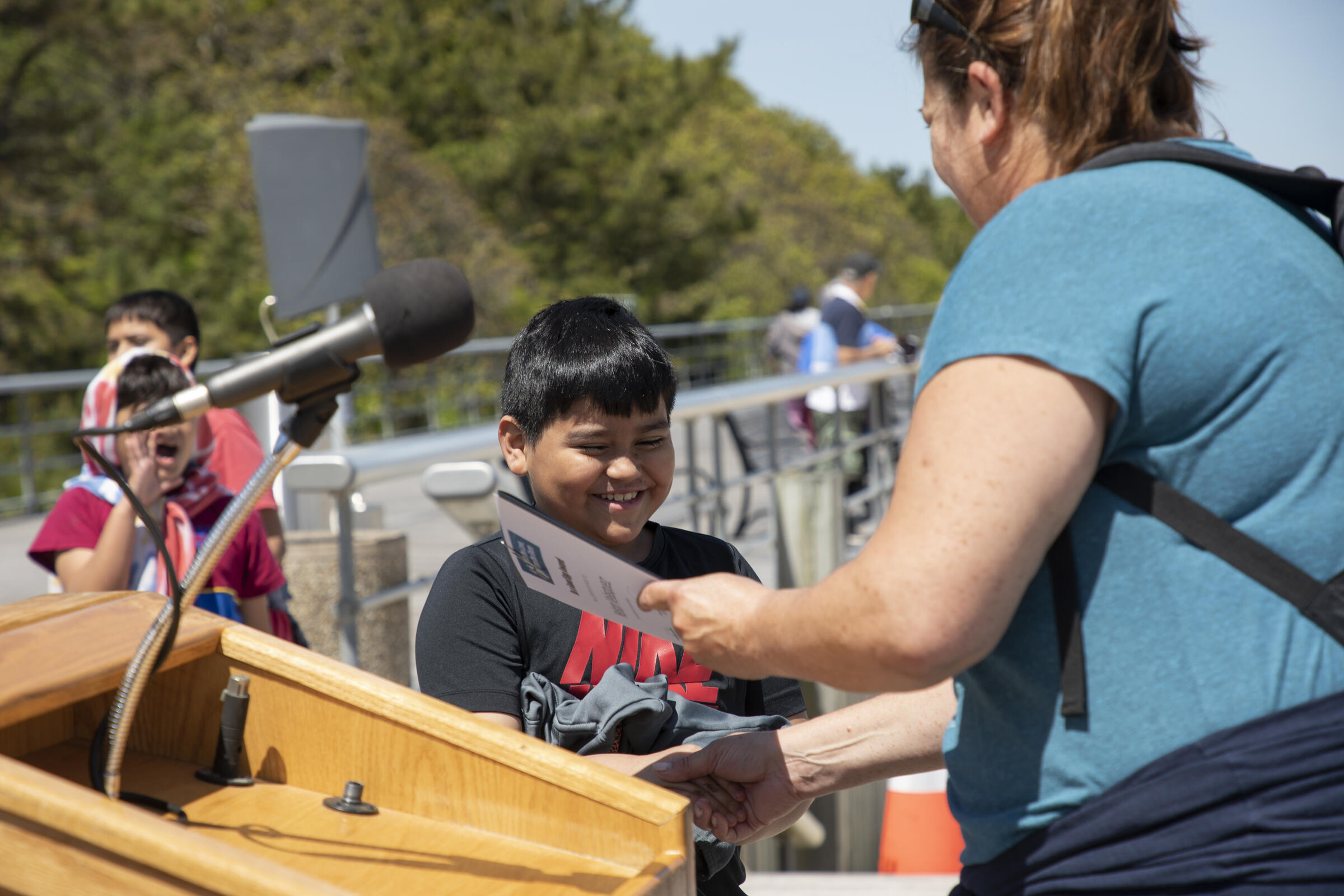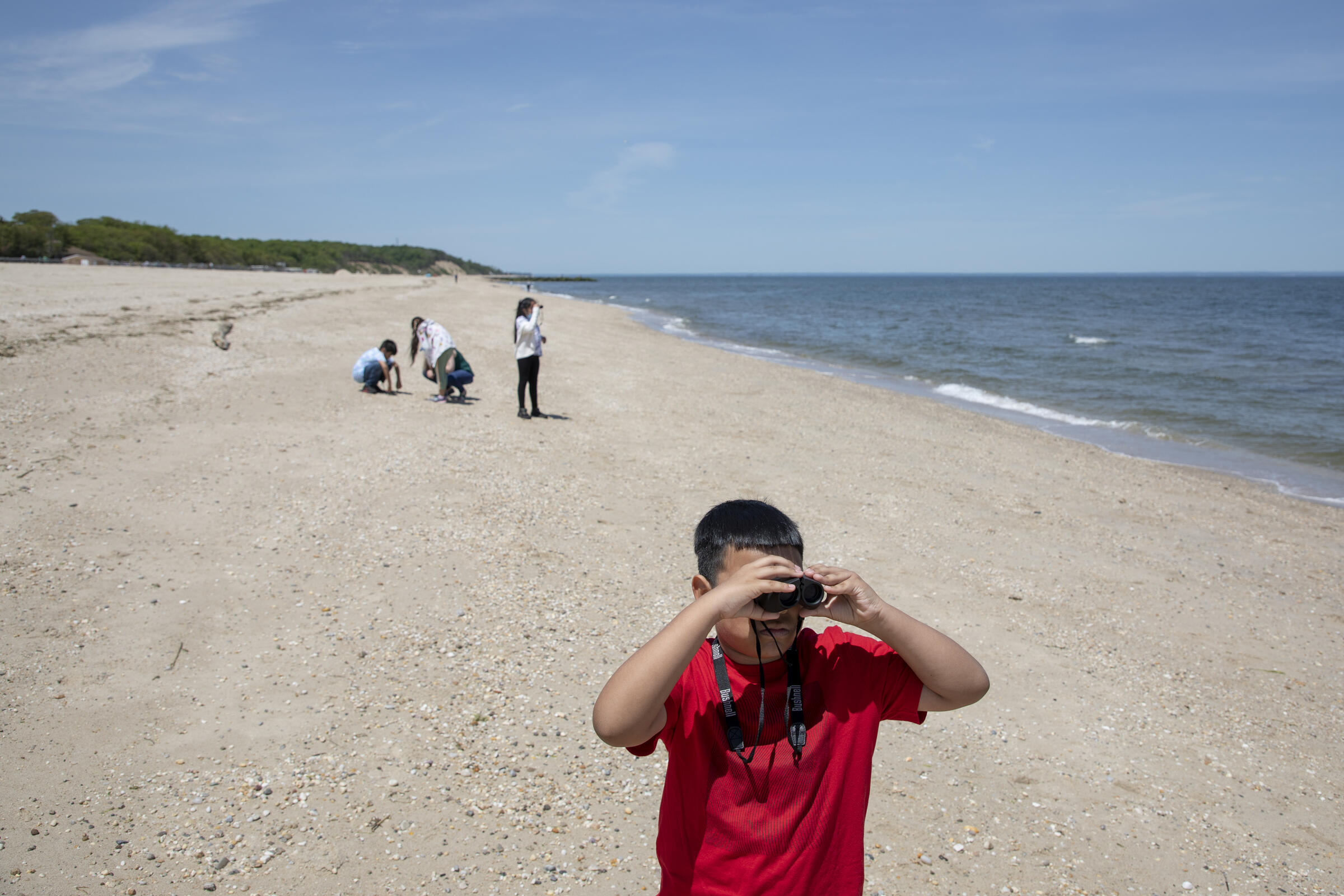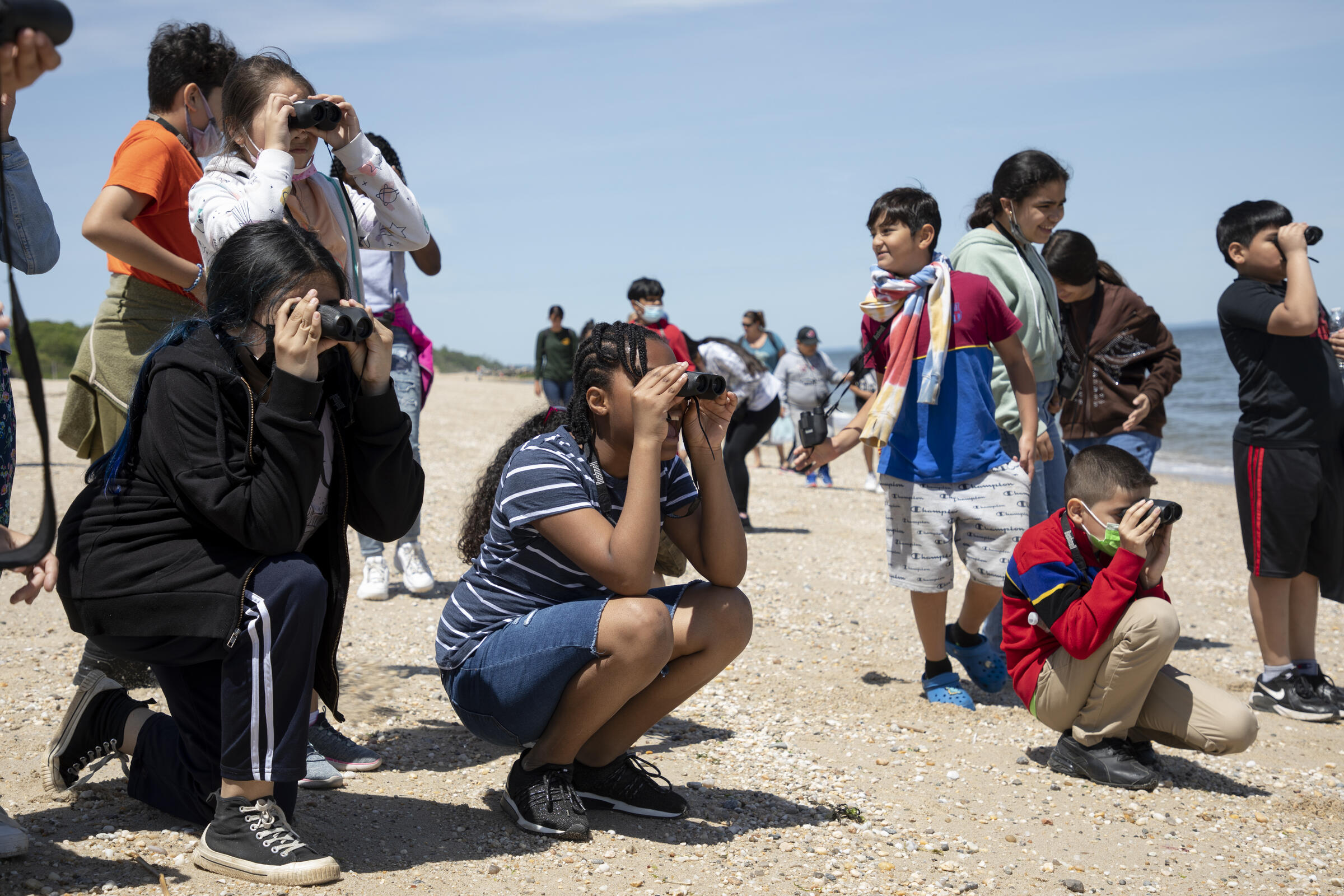This week, Drexel students co-hosted a press conference alongside Audubon New York and NYS Parks to celebrate the beginning of beach season and to help protect threatened beach-nesting birds!
Every May through August, vulnerable Piping Plovers, American Oystercatchers, Least Terns, and more raise chicks on our beaches and offshore islands — chicks that weigh less than a single scoop of ice cream. When people and pets get too close, the birds often fly off in fear. This leaves their chicks vulnerable to fatally high temperatures, predators, and even accidental death.
The students have been working with their art teacher and staff from the Theodore Roosevelt Sanctuary and Audubon Center to create themed educational signage about the birds. At the event, staff from Audubon New York presented each student with a weatherproof version of their sign, which will be put on display at local beaches around protected nesting areas.
Each student received an official certificate from the Office of the Nassau County Executive in celebration of their conservation work. Remarks were given by the students themselves, as well as Suffolk County Legislator Rob Trotta and NY State Parks.
To help inspire their artwork, the students learned how to identify beach-nesting birds and their nests, and how to know when a bird is being disturbed – like if the bird flies away when you approach it, calls out, or acts like it’s injured to draw you away from its young.
For beachgoers who notice any of these behaviors, you too can learn how to “Be a Good Egg” on the beach! Try practicing these tips to help make our beaches safe for shorebirds and their chicks:
- When space allows, round your path around shorebird flocks and individual birds to give them enough space to feed and rest.
- Stay away from roped off areas where shorebirds are raising their young.
- Let birds tend to their nests and babies in the safety of the dry sand by walking in the wet sand.
- If pets are permitted on the beach, keep them on leash at all times and away from protected nesting areas.
- Pay attention to beach closures, which are in place to protect vulnerable shorebird populations
And don't forget to pledge to Be a Good Egg!
Many thanks to the National Fish and Wildlife Foundation and the Long Island Sound Futures Fund for funding this beloved program.

